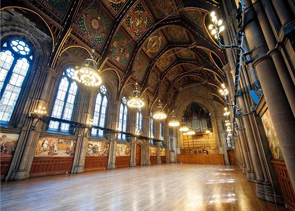The history of the great Victorian Town Halls of Northern England
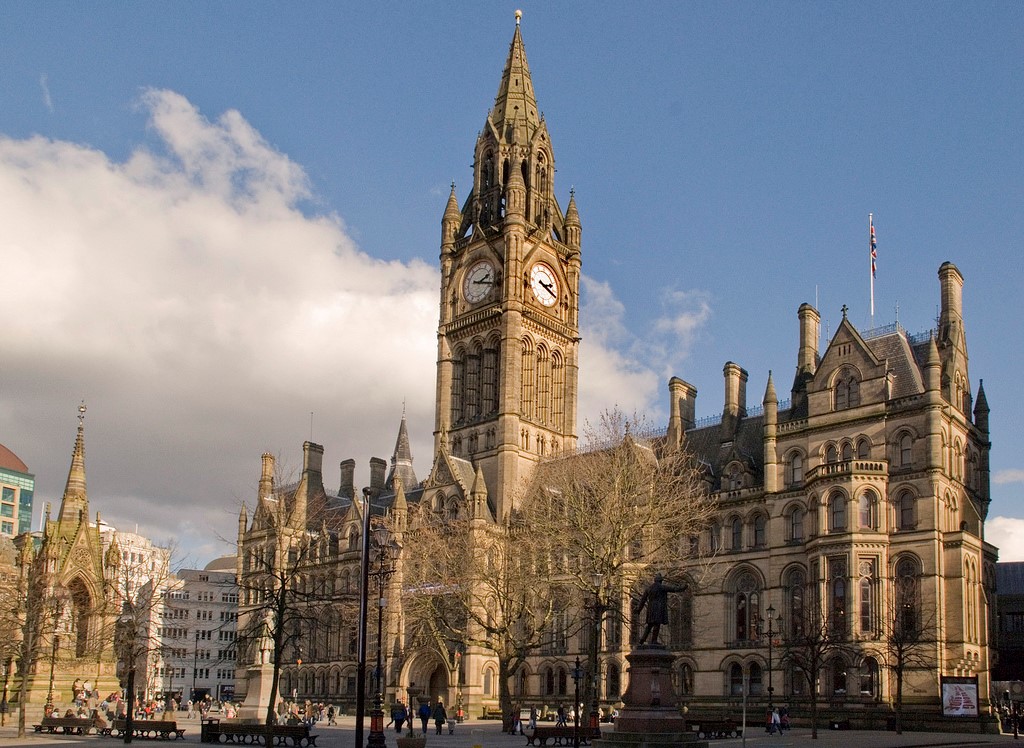 "The Town Hall itself must astonish many a Londoner, unaccustomed as yet to the idea of a great municipal organisation, when he beholds it for the first time." Dolman - about Manchester Town Hall.From industrial squalor to civic pride, the story behind some of the most impressive buildings of the North involve a unique mix of economics, grand designs and noble sentiments within communities.
"The Town Hall itself must astonish many a Londoner, unaccustomed as yet to the idea of a great municipal organisation, when he beholds it for the first time." Dolman - about Manchester Town Hall.From industrial squalor to civic pride, the story behind some of the most impressive buildings of the North involve a unique mix of economics, grand designs and noble sentiments within communities.
By 1850, England had become the first urban industrial nation with over 50 per cent of the population residing in towns and cities. Between 1800 and 1841, Sheffield doubled its population, Manchester tripled and Liverpool went from 80,000 to over 280,000.
 The town halls of Victoria's reign grew up to fulfil the needs of the rapidly developed towns. In them, new wealth, new patrons and a new language of architecture opened the door to a rich and sometimes strange variety of buildings.
The town halls of Victoria's reign grew up to fulfil the needs of the rapidly developed towns. In them, new wealth, new patrons and a new language of architecture opened the door to a rich and sometimes strange variety of buildings.
We are currently taking a look at some of these iconic buildings in our next issues of the magazine previewed here and what better place to start than with the current ongoing projects to restore them to the state the architects intended - in Manchester and Rochdale.
Manchester
Manchester Town Hall (1868-77) in Albert Square is one of the most iconic landmarks in the city. It's regarded as one of the finest examples of Neo-Gothic architecture in the United Kingdom, and is one of the most important Grade One-listed buildings in England.
It was built because the neoclassical town hall in King Street had become too small to house the expanding business of the corporation. A competition was held and won by Alfred Waterhouse (1830-1905), mainly for his ingenious planning.
The site was an irregular triangle on which had to be fitted a large hall, a suite of reception rooms and living quarters for the Lord Mayor, as well as offices for all the corporation departments and a chamber for council meetings. Waterhouse successfully combined the ceremonial and workaday requirements.
The Town Hall was designed in the thirteenth century Gothic style but it was, in Waterhouse's words, a building 'essentially of the nineteenth century'. It incorporated innovations such as a warm air heating system, and its structure comprises fourteen million bricks encased in Spinkwell stone. The cost of the Town Hall was around £1 million.
"The Town Hall itself must astonish many a Londoner, unaccustomed as yet to the idea of a great municipal organisation, when he beholds it for the first time from the centre of Albert Square. The building cost over a million of money, took ten years (1868-77) to erect, and contains 314 rooms, wherein the daily work is done of the many departments of Manchester's municipal actions." Frederick Dolman 1895 MUNICIPALITIES AT WORK
 Dolman also observed in his chapter on Manchester, the work in the Great Hall and on the subject of art - the restoration of which is featured here, with the help of the Corporate Estates Team at ‘Our Town Hall’ and James Stone Masonry. "And in considering the encouragement which has been given by the Municipality to art in Manchester, the mural decoration of its splendid Town Hall must not be forgotten. Mr Ford Madox Browne's fine series of frescoes serve the double purpose of stimulating the citizens' sense of beauty whilst instructing them in the history of their city - the twelve panels, with one or two exceptions, illustrating the chief episodes in the annals of Manchester." Brown belonged to a school of art frowned on in London at the time but flourished in the industrial north and midlands. Most of the paintings are now considered priceless.
Dolman also observed in his chapter on Manchester, the work in the Great Hall and on the subject of art - the restoration of which is featured here, with the help of the Corporate Estates Team at ‘Our Town Hall’ and James Stone Masonry. "And in considering the encouragement which has been given by the Municipality to art in Manchester, the mural decoration of its splendid Town Hall must not be forgotten. Mr Ford Madox Browne's fine series of frescoes serve the double purpose of stimulating the citizens' sense of beauty whilst instructing them in the history of their city - the twelve panels, with one or two exceptions, illustrating the chief episodes in the annals of Manchester." Brown belonged to a school of art frowned on in London at the time but flourished in the industrial north and midlands. Most of the paintings are now considered priceless.
What’s on the outside? The exterior of the Town Hall bears some notable sculptures. Over the main door is a statue of the Roman General Agricola, who founded Mamucium in 9AD. Above him are Henry III and Elizabeth I, while at the apex of the main door gable is a statue of St. George.
The clock tower. Built into one of the angle turrets of the 280ft tower is a 173-step staircase leading to the bell chamber and the clock, with its Polish glass face and 10ft-long minute hand. The clock mechanism was made by Gillet and Bland, and was started on New Year's Day 1879. The inscription on the three clock faces which are visible from Albert Square reads: "Teach us to number our Days." There are 24 bells in the tower; the Great Hour Bell weighs 8 ton and 2 cwt and is called Great Abel, named after Abel Heywood, the Mayor at the time of the official opening.
Pioneering tiling restorer just keeps adding to his achievements
Steve Sinnott can be said to be a man with a mission. That mission is to restore as many historic tiled floors and walls as he can, whether they are listed or not: so they can be viewed and enjoyed once more – by their owners in the case of private residences or by the general public in the case of the many public buildings he has worked on.
Steve began his working life as a stone carver, but a contract that had a badly damaged marble mosaic floor changed his life. It took him nearly three years to restore that floor, involving the cutting of almost one million cubes, or tesserae.
Click here for further information.
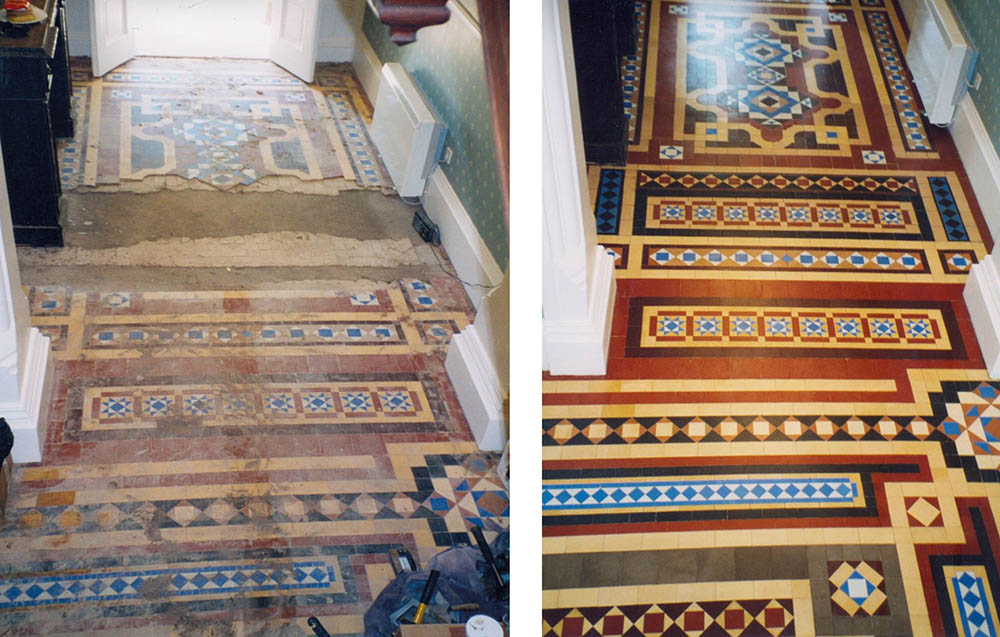
Royton Town Hall restoration uncovers hidden treasures as community welcomes transformation
In September, Royton Town Hall re-opened its doors following a complete restoration. The community has welcomed the transformation, which has included a new-look library, community space and a new garden area.
Bringing the much-loved landmark back to its original glory was at the heart of the project. The town hall's many Victorian features now have pride of place, including some which came as a brilliant surprise.
Click here for further information.

State of the art – plans put forward for Touchstones investment
Redevelopment of Touchstones, the borough’s arts and heritage venue is progressing, with a planning application now submitted. The building is set to be transformed into a creative and cultural hub with new flexible performance and production spaces for artists, improved areas for training, live events and exhibitions. The plans also include a new dining space integrating the borough’s collections on the theme of food heritage, co-created with Rochdale’s diverse communities. There will be vital works to improve accessibility and sustainability. If approved, work is due to commence at the beginning of 2024.
Click here for further information.

Conservation work reveals town hall’s decorative glories
Manchester Town Hall, designed by Alfred Waterhouse and constructed between 1868-1877, is a neo-Gothic, Grade One-listed masterpiece, lying at the geographical and civic heart of the city and providing a focal point for its people in times of both celebration and despair. At the centre of the Town Hall is the Great Hall, described by Ruskin as ‘the most truly magnificent Gothic apartment in Europe’. The vast chamber was designed to celebrate 19th-century Manchester’s global success in trade and commerce.
Click here for further information.

Earlier restoration of Cuban mahogany doors
The Town Hall's large Cuban mahogany doors and associated over panels were restored in an earlier project by David Podmore and his first class team of restorers and conservators.
Careful repairs and remodelling were carried out to size the doors and corresponding rebates to the original openings following extensive alteration during the previous 70 years.
Veneers were repaired and matched using original period sourced materials and great emphasis paid to cleaning and repolishing the surfaces to retain all the existing patina and colour. This was achieved with great skill by the French polishers who achieved an authentic finish.
Another interesting aspect of the work was that two of the doors were in fact sham dummies and had brickwork to the reverse sides. In the new scheme these had to be fully operational as opening doors and so the craftsmen at A G Podmores created a facsimile of raised and fielded panels on the reverse side - this was done using existing timber salvaged from the original redundant door linings together with some flame mahogany veneers that had been in Podmore's stock for over 40 years. Once again all the new work blended in beautifully.
For further information on the company's work visit www.agpodmore.co.uk

Our Town Hall project - the transformation
The Town Hall closed in January 2018 so that work could begin on the 'Our Town Hall' project.
At the very heart of the city, Manchester’s Grade1-listed Town Hall is a much-loved landmark, where we gather at important times to honour and celebrate, to welcome visitors and to do business. It’s where we host civic guests, international delegations, Mancunian weddings and special events. It’s where we celebrate those who’ve been awarded the Freedom of the City.
But, having opened in 1877, the building is showing its age. So we've started a major update to this architectural masterpiece to protect and improve it for Manchester and the nation, lovingly restoring it and re-opening in 2024. We call this project ‘Our Town Hall’ because it really belongs to the people of Manchester.
Since 2014, we have done investigations and surveys to understand what we need to do to restore and bring the Town Hall and Albert Square up to modern standards. The budget for the whole project - including a sizeable contingency element which should reduce over time - has been set at up to £328.3 million. Independent expert analysis has confirmed the assumptions behind this projected cost.
On Wednesday 8 March 2017, senior councillors gave the final go-ahead to a major project to safeguard and repair the Town Hall and Albert Square. The scheme aims to boost public access and ensure that the building and square continues to play a role at the heart of city life.
Watch the video about the Town Hall project. Get more information about the OTH transformation.
We will be taking a look at town halls and iconic Victorian civic buildings and their restoration in future issues of Ecclesiastical and Heritage World. Towns covered include Liverpool, Manchester, Rochdale, Leeds, Bradford, Halifax and more. Feel free to take part - email Richard Shepherd on This email address is being protected from spambots. You need JavaScript enabled to view it.
Revamped masterpiece adds clarity to its delivery
While Rochdale’s Grade One-listed Victorian Gothic Town Hall is one of the finest municipal buildings in Britain, renowned for its unique and detailed architecture, it also functions as the ceremonial headquarters of Rochdale Metropolitan Borough Council and houses local government departments, including the borough’s civil registration office.
Click here to read the full story
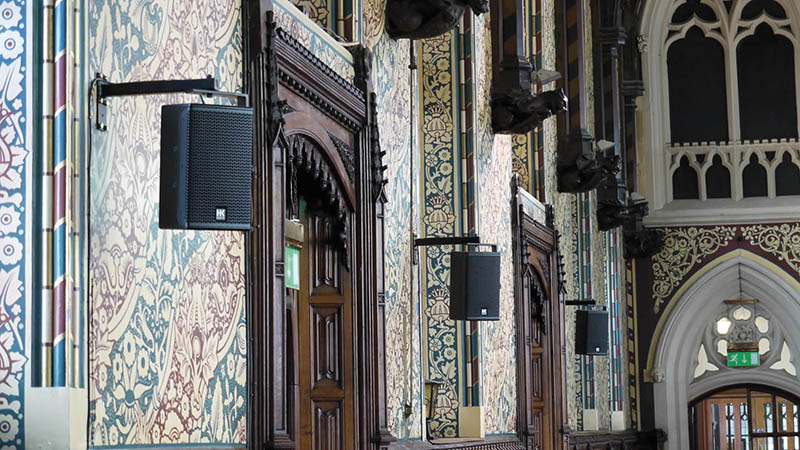
Historic Tunstall Town Hall given a new lease of life and set to reopen
Stoke-on-Trent City Council has completed works on the historic, local building Tunstall Town Hall, which was built in 1885.
The city council have been revamping the Town Hall, alongside contractor and developer G F Tomlinson, since April 2020 to uncover, repair and preserve some of the original heritage features.
Click here for further information.
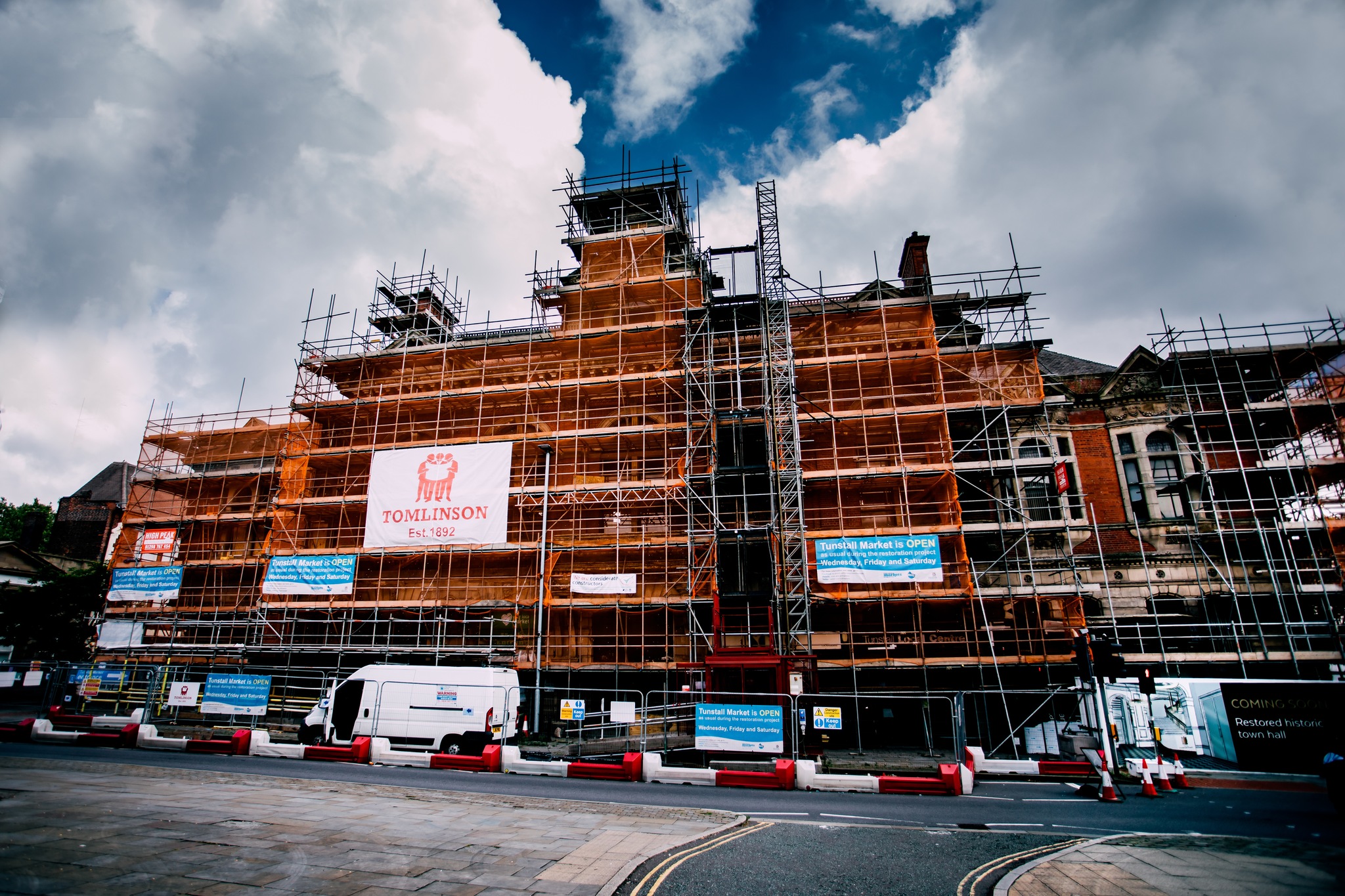
Incredible glass restoration project at Grade 1 listed Manchester Town Hall
GQA centre Absolute Training Solutions Ltd has contributed to the successful restoration of historic stained glass panels at Grade 1 listed Manchester Town Hall by supporting employees of Recclesia Stained Glass through NVQ attainment. Grade 1 listed buildings, which are incredibly rare in the UK are those deemed to be of exceptional national, architectural or historical significance.
Click here for further information.
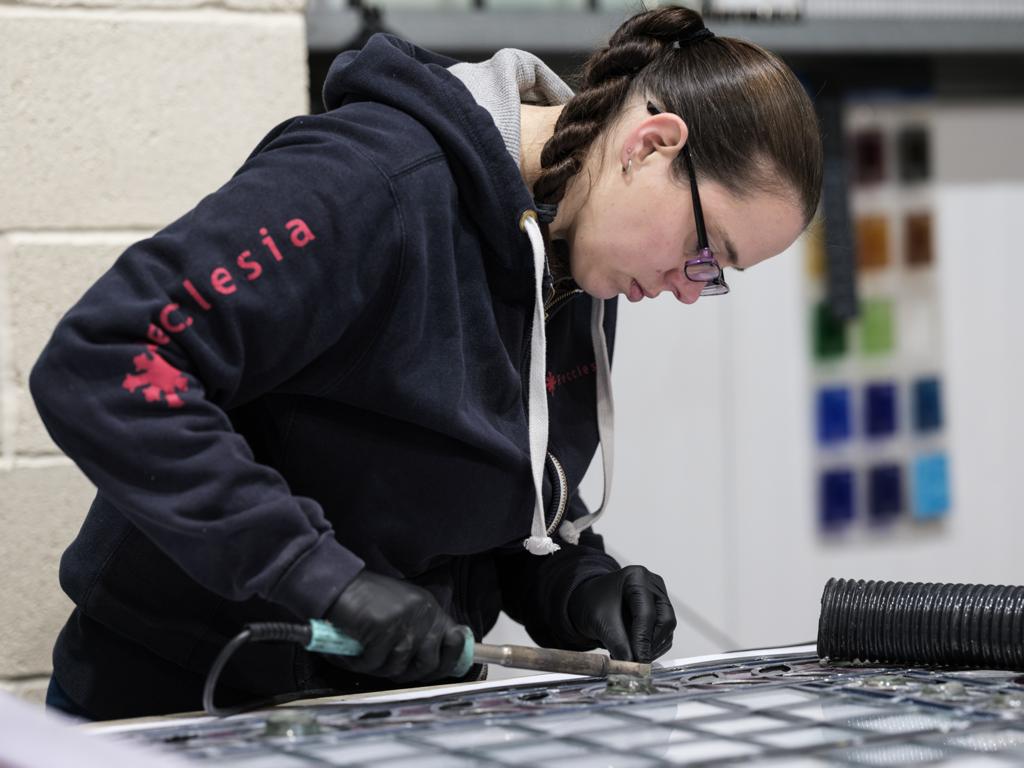
Rochdale Town Hall restoration project
Rochdale Town Hall is widely-regarded as one of the UK’s finest examples of Victorian gothic architecture. The Grade-I listed building was designed by William Crossland and opened in 1871 as a symbol of the town’s industrial standing in the textiles trade. According to Historic England, its ornate stylings are rivalled only by the Palace of Westminster.
In 2021 work commenced to restore the building to its former glory, some 150 years after it was completed. The extensive work being carried out will create an open and accessible community space featuring exhibition rooms and a new Bright Hall for community events to take place.
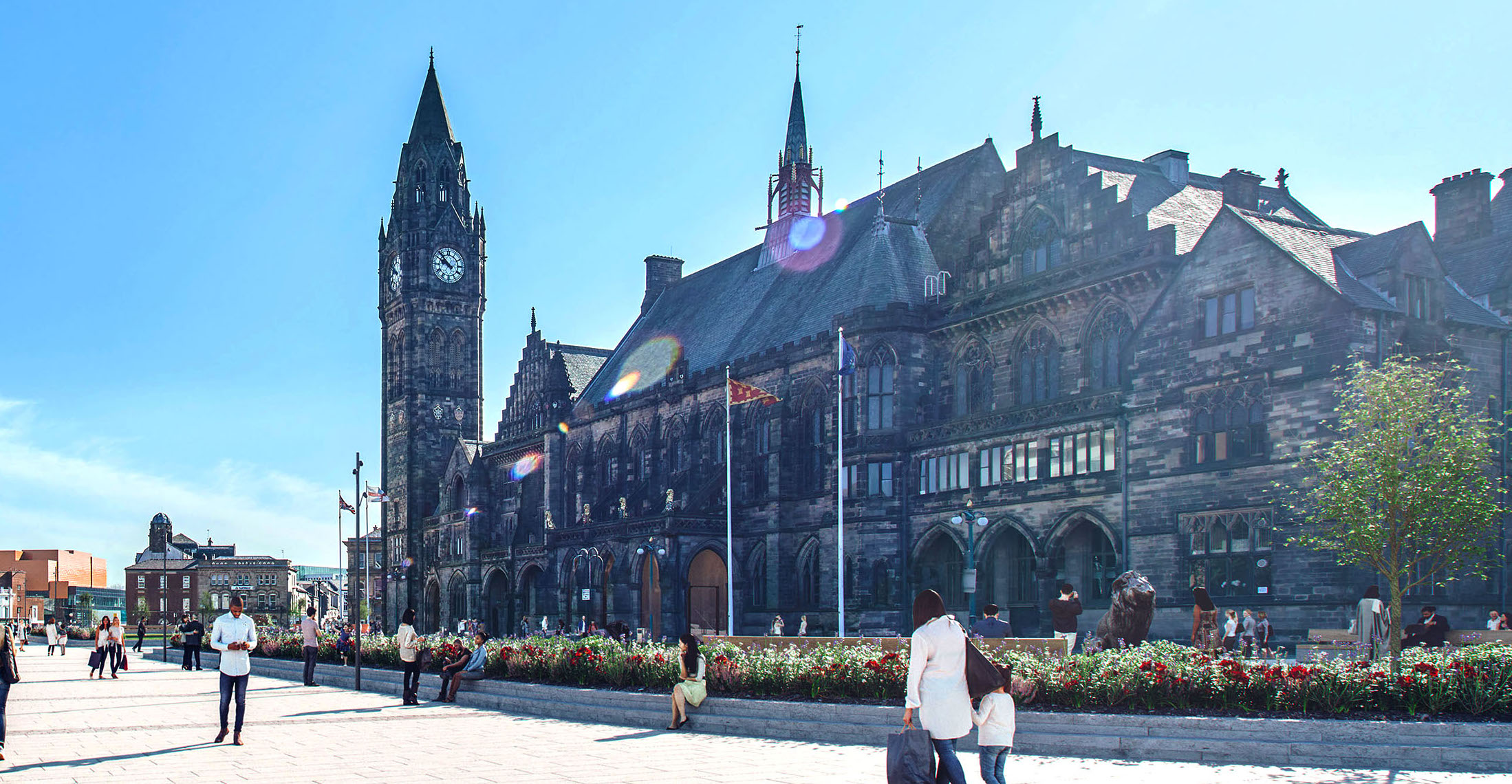
Manchester Town Hall - cleaning and restoration of the Great Hall
James Stone Masonry Ltd in association with McCrory Holding are proud to have been involved in this prestigious and historic grade one thirteenth century Gothic style project.
Click here to read the full story.
